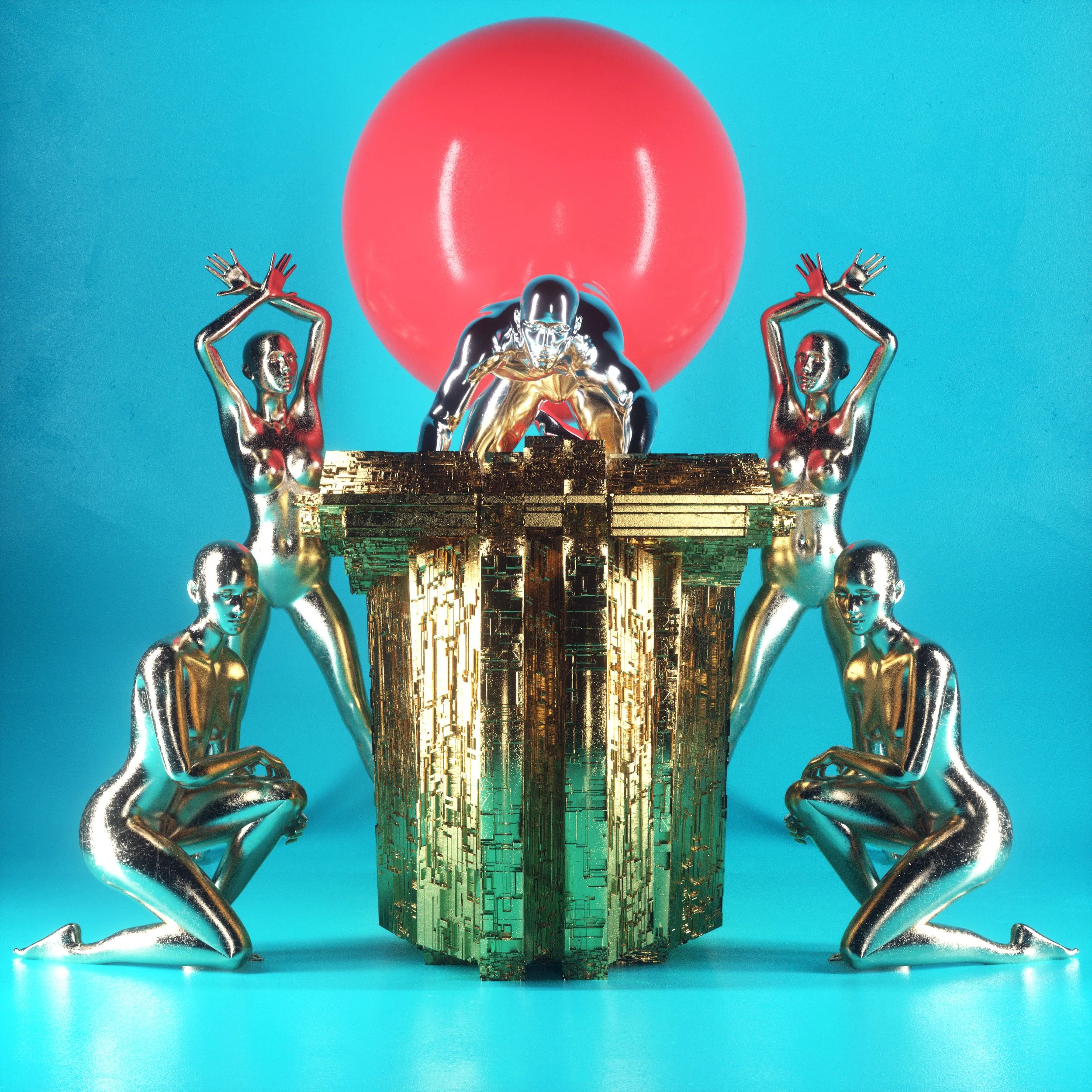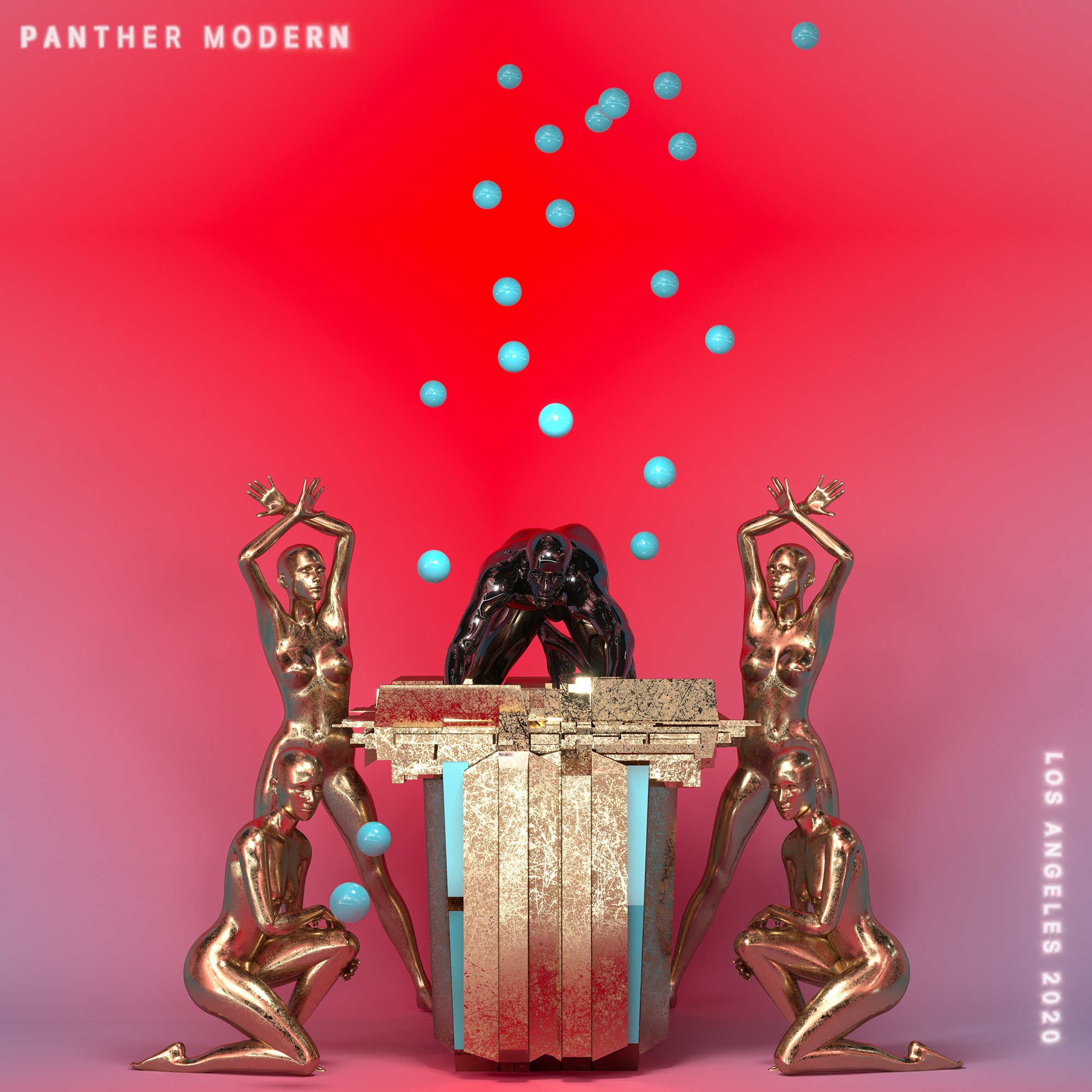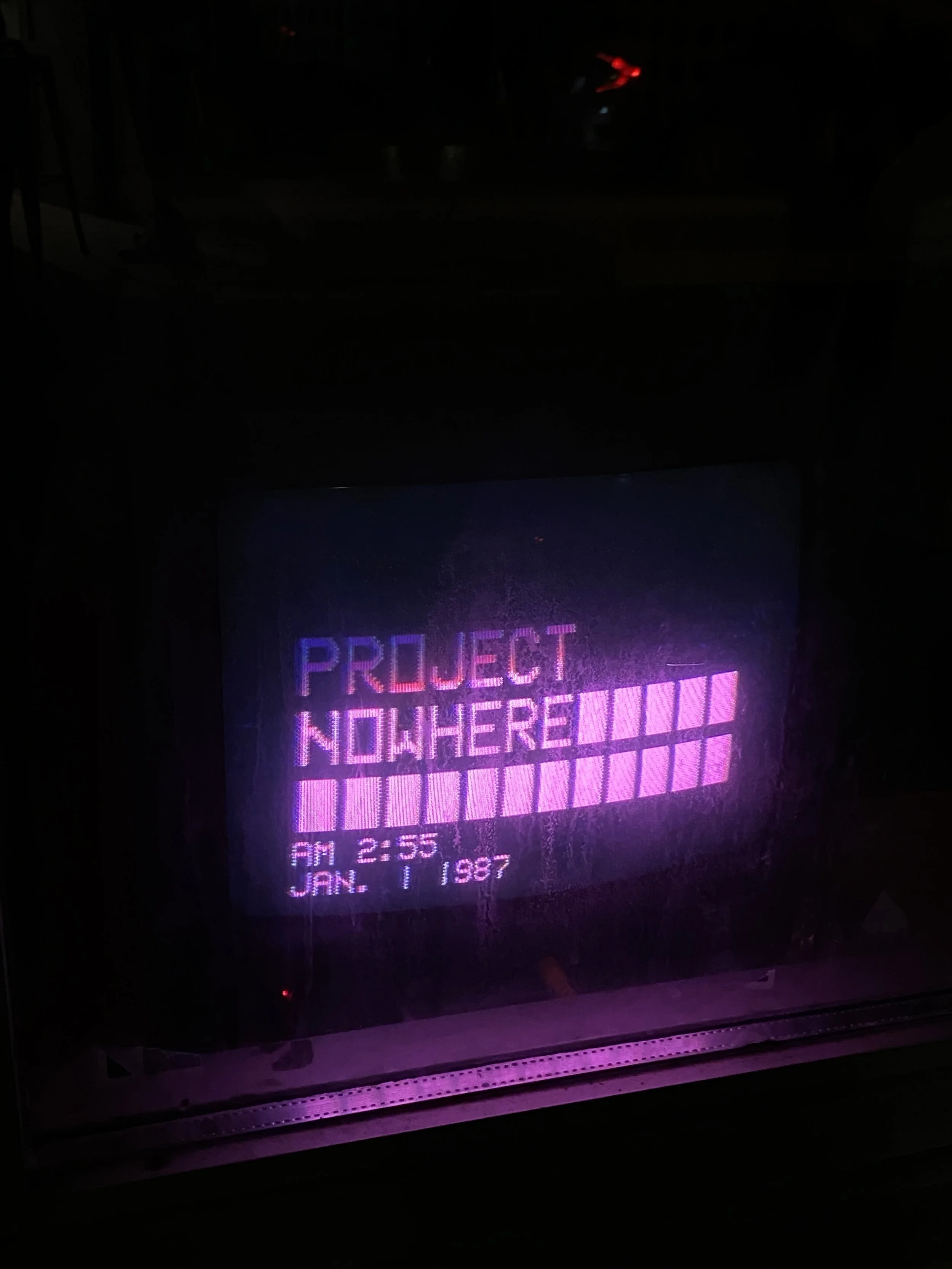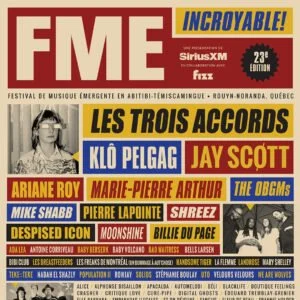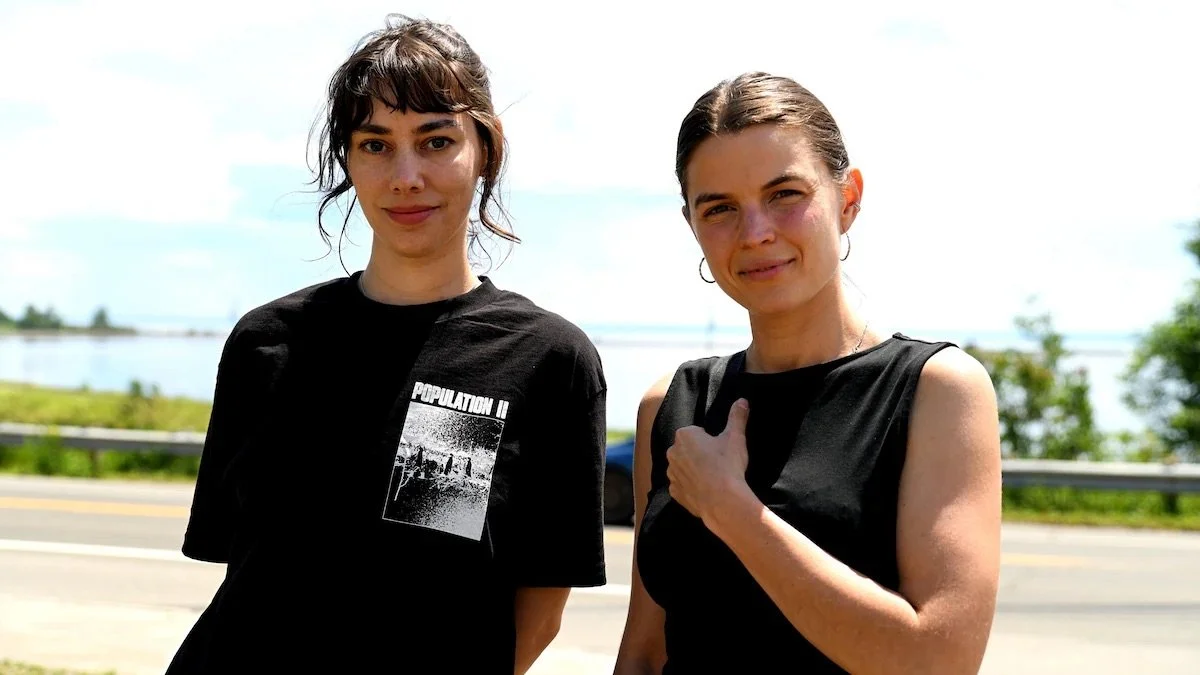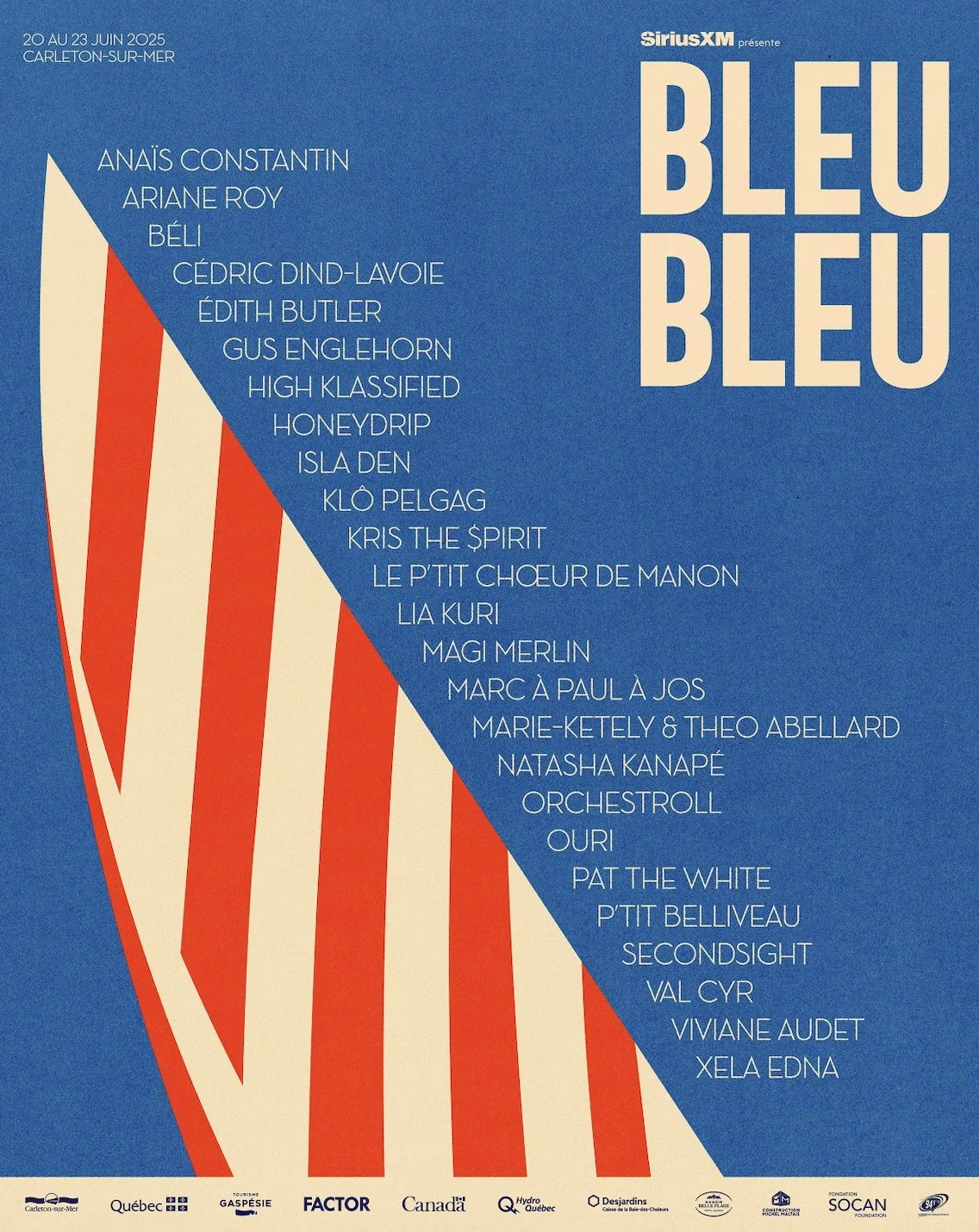Enter Panther Modern: NFTs, Community-Building & Half-Life (Sextile / HEAT)
LA2022 cover by Panther Modern
Picture yourself in a dark room, lasers filtering through the smoke machines. The bass cuts through the noise of the crowd and you see a group of people you think you know dancing across the room. Your body is filled with warm static, and the sensory dream of dancing with strangers takes over.
This is the world of Panther Modern, the electronic project of Brady Keehn, an NFT-savvy artist from LA. You know we love community-oriented musicians who make us feel like we’re in a dark room dancing the night away, so we reached out.
We spoke with Brady about the elusive world of NFTs, his creative career and how he’s been building virtual communities since the 90s.
Press photo via Panther Modern by Nedda Afsari
Brady is a singer-songwriter in the band Sextile and Panther Modern, his solo project. He explains it as, “experimental in the way that [the project] tests the algorithms of Facebook and Instagram by creating virtual avatars to see how far I can push them. I make dance music, and in the same way, it’s an experiment to see what people will dance to.”
After touring and performing on a stage extensively with Sextile, Brady became frustrated with the power dynamics that exist between audiences and performers, which is partially what led to the creation of his online avatars, JA and JB. Wanting to break that barrier, Brady now only brings a sampler with him to live shows and immerses himself within the crowd so that everyone can sing and dance with him. “It’s way more fun than being on a stage by myself. It freaks me out, it makes me feel like a monkey on a stage saying, ‘Look at me dance!’ I don’t like that vibe, I’d rather be with everyone else.”
Artwork by Panther Modern
These avatars allow Brady to access alternate identities in the virtual world. JB, for example, doesn’t sing, but he might make techno music; while JA does sing and acts more like Brady. Both are trained with all of his movements using MOCAP (motion-capture) technology. According to Brady, it’s all an experiment, while trying to disrupt the status quo. (He’s also been doing some very cool MOCAP work with Reggie Watts -- check it out here.)
To consciously push the algorithm is refreshing, especially when we can easily feel so helpless; trying to appease the robot overlords so that our followers are actually able to see the content they signed up for.
On that note, Brady expands, “The more we appease the robot, the more eyes we get, all to hopefully sell vinyl or a t-shirt. It’s exhausting and unsustainable.” And so the question remains: How can I be myself on the Internet in a way that will work for the algorithm, and won’t burn me out?
Los Angeles 2020 Artwork by Panther Modern
Going back to Brady’s roots, he has always been searching for different ways to expand his reality and to find community via the World Wide Web. Growing up in the suburban farmlands of Virginia, Brady got his first taste of escapism via online chat rooms, and through a video game called Half-Life. Already a fan of sci-fi, Brady started designing his own levels and avatars in the game, gaining interest in 3D animation and world-building. However, Brady’s futuristic escapism was cut short when he was sent to military school, and then Catholic school, and worst of all… art school. (Just kidding, but not really)
Despite these suffocating environments, Brady looked for alternative ways of being every step of the way. It was difficult for him to accept his reality, which he says made him a big futurist, and developed his appreciation of other people who question systems of value, commerce, and power.
And so began our conversation around NFTs. We established that the world of crypto is dominated by tech bros and financial experts, who aren’t always willing to share their knowledge with anyone outside their Bitcoin and Ethereum-fuelled worlds. The hoarding of resources and information allows a select few to control this emerging digital space, a practice which Brady is adamantly working against.
He believes that with any new tech sphere, it’s important for artists and marginalized peoples to get in early to be able to shape their future. Brady has been sharing resources on his Twitter, giving talks with other NFT-savvy artists, as well as his process of creating and minting his own NFTs.
Drawing from his personal experience with labels, contracts, and their meager trickle-down of funding models, Brady knows firsthand that Spotify cheques are not paying anyone’s rent. This is why he decided to release his music independently with Panther Modern, selling each track individually as an NFT.
While he’s only recently been selling his songs as NFTs, it’s already proven to be a more viable source of income, rather than waiting for Spotify streams to roll in. Along with his collaborator Cameron Michel, the two have been able to use their income from NFTs to lease a large warehouse space that will act as a home for upcoming Panther Modern, Sextile, and other projects, including an NFT dance-centric company called HEAT.
When I ask Brady what exactly could be an NFT, he explains that any original work can be an NFT and that you don’t need to be a huge artist to start making them.
“It doesn't even have to just be digital. For example, say you make a painting. Take a picture of that painting, and then turn that into an NFT. Then, when that NFT is purchased, you could send the painting to the buyer.”
The NFT market is still largely experimental, and Brady has been working with HEAT to turn dance moves and other unique sets of motion data into NFTs with the help of his MOCAP technology. This could be one way that viral dance moves (on TikTok for example) could be attributed to the original creator, and could secure income for them when those dance moves are replicated by huge artists in their music videos. The examples that come to mind, of course, are the countless Black artists who created viral dances on TikTok, only to rarely receive the credit they deserve. The technology would also allow these dances to be licensed to major video games and uploaded to your avatar there, all while still paying the original creator.
Another NFT avenue could be video game music. According to Brady, video game companies often don’t want to pay for music licenses because it’s too expensive, so they end up making their music in-house, leaving musicians completely out of that market. So, how do musicians get in? One idea he had was to mint loops to video game companies. They would then be able to use the loop (a drum beat, for example) to create their own music, and then mint that music. That way, everyone’s getting paid, and everyone samples each other.
Then comes the potentiality of buying digital land with Ethereum. Brady actually has his own digital venue that people can explore, and when you click on his merch or NFTs, it takes you directly to his Bandcamp or NFT platform to buy that work. Big brands like Nike have begun to create their own metaverses, while other artists like Skawennati have used the ability to buy digital land in games like Second Life to reclaim stolen land and tell Indigenous histories through that platform.
Brady got into making NFTs shortly after he started making video flyers for his shows on Instagram. Understanding that the algorithm pushes short video content, Brady took his knowledge of 3D rendering and ran with it, teaching himself everything off of YouTube tutorials. He now uses tools such as OctaneRender, Blender, Marvelous Designer, Substance Painter, After Effects, and his MOCAP suit to bring his creations to life.
If you’re looking for an entry point to the world of NFTs, he suggested checking out Zora, Rarible, and Foundation. Brady explained that a majority of the crypto-convos happen on Twitter and Discord. He also wanted to emphasize that although the space can be intimidating, the best way to get into NFTs is to start making them yourself, especially if you’re not seeing the representation that you want to see in those spaces. While tech bros unfortunately dominate the news cycle surrounding NFTs, it doesn’t mean that communities that prioritize artists and marginalized groups don’t exist.
“Start following the people who are creating NFTs, educate yourself, get involved in the communities. Zora requires an invite via an artist (like Clubhouse), so it's not like OpenSea, which is like a whenever, wherever, Walmart of NFTs. It’s not curated at all, which makes it hard to find good work. Marketplaces like Zora and Foundation incentivize members via invites, which then builds the community around the platform. It also reduces the cash grab schemes from investors.”
And so, in a strange digital cycle, Brady has once again returned to the online community-gathering and world building he thought he had left behind for military school in the 90s.
If you’re not in the NFT world, you can support Panther Modern by buying one of his very limited-run vinyl, t-shirts, or posters. He has also just released LA2022, a remix EP of his 2019 release Los Angeles 2020, which is available on all streaming platforms.
Panther Modern
Website I Twitter I Instagram I Tiktok
Foundation I Spotify I Bandcamp
Malaika Astorga is the Co-Founder & Creative Director of Also Cool. She is a Mexican-Canadian visual artist, writer, and social media strategist currently based in Montreal.

